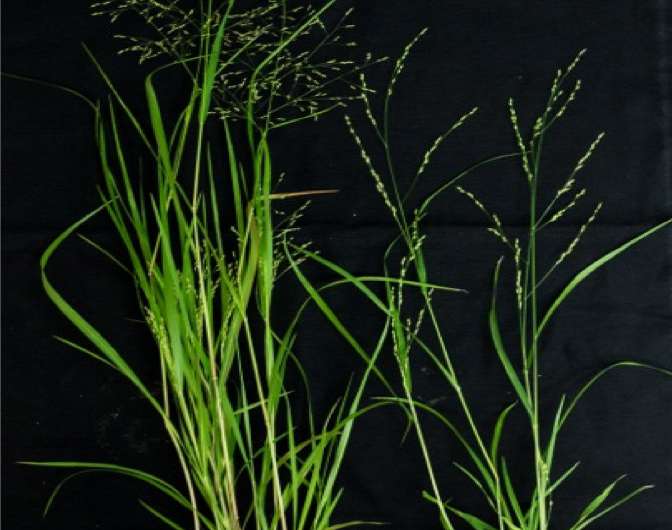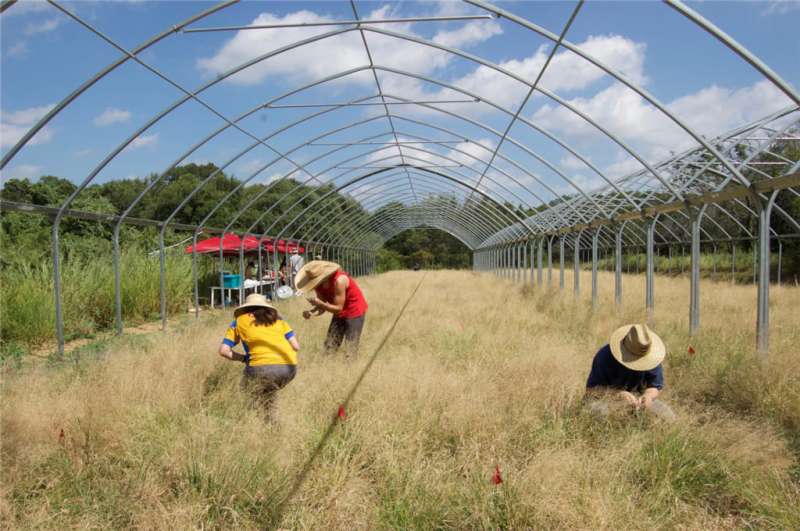A model system for perennial grasses

Researchers have developed a genomic model to study drought tolerance in perennial grasses using Panicum hallii (Hall's panicgrass), by generating two complete genomes from varieties that diverged over a million years ago. The hallii variety thrives in desert environments, while the filipes variety is less drought tolerant and is found in river and coastal environments.
The perennial grass switchgrass (Panicum virgatum) is a candidate bioenergy feedstock with a complex genome with multiple copies of its chromosomes. Switchgrass has deep roots that allow it to access nutrients easily from a variety of soils and has a high tolerance of extreme water conditions such as drought and floods. The U.S. Department of Energy (DOE) supports research programs for developing methods for converting plant biomass into sustainable fuels for cars and jets. By studying a close relative model species like P. hallii, researchers can develop crop improvement techniques that could be applied to switchgrass.
Rising global temperatures are causing extreme weather events, ranging from prolonged droughts to extended periods of very heavy rainfall and severe flooding. With an ever-increasing global population, drought is an obstacle toward improving crop yields for food and fuel use.
In Nature Communications, a team led by Tom Juenger at the University of Texas (UT) at Austin and including researchers at the DOE Joint Genome Institute (JGI), a DOE Office of Science User Facility, report the culmination of nearly a decade of work to develop genomic resources for drought tolerance in perennial grasses. The team aims to apply the resources developed for P. hallii towards stress tolerance improvement in its more complex relative, the candidate bioenergy crop, switchgrass.

Through the JGI's Community Science Program, JGI sequenced and assembled near-complete genomes of P. hallii var. hallii (99.2% complete) and P. hallii var. filipes (94.8% complete) and resequenced a host of natural collections from across the species range. With these high-quality reference genomes for P. hallii, researchers can identify and characterize the regulatory elements that influence adaptation and tolerance to stressors such as drought. This information can be applied toward improving crop yields in other grasses.
The team conducted several large-scale field experiments and analysis to find relationships between sequence variation and plant stress responses. For example, offspring of a cross between the hallii (HAL2) and filipes (FIL2) varieties were subjected to a monthlong drought, and then half the plants were watered just before harvesting. As HAL2 has adapted to severe summer droughts, these plants were better able to uptake soil water compared to the other plants. The team used QTL mapping to find the genomic regions that control gene expression and physiological responses to drought. They found that trans-regulating factors are important regulatory elements that determine drought responses in P. hallii.
The HAL2 and FIL2 genomes are available on the JGI's plant portal .
More information: John T. Lovell et al. The genomic landscape of molecular responses to natural drought stress in Panicum hallii, Nature Communications (2018).
Provided by DOE/Joint Genome Institute



















